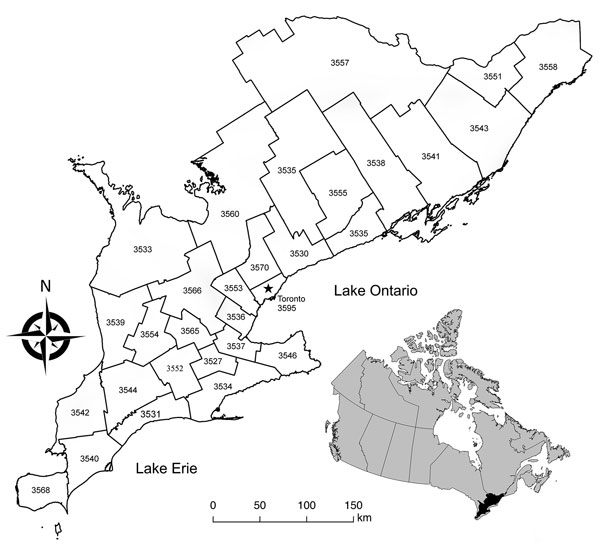Volume 25, Number 2—February 2019
Research
Echinococcus multilocularis Infection, Southern Ontario, Canada
Figure 1

Figure 1. Map of the 29 southern Ontario public health units’ boundaries and corresponding identification numbers (see Table). Inset shows location of southern Ontario within Canada.
Page created: January 18, 2019
Page updated: January 18, 2019
Page reviewed: January 18, 2019
The conclusions, findings, and opinions expressed by authors contributing to this journal do not necessarily reflect the official position of the U.S. Department of Health and Human Services, the Public Health Service, the Centers for Disease Control and Prevention, or the authors' affiliated institutions. Use of trade names is for identification only and does not imply endorsement by any of the groups named above.